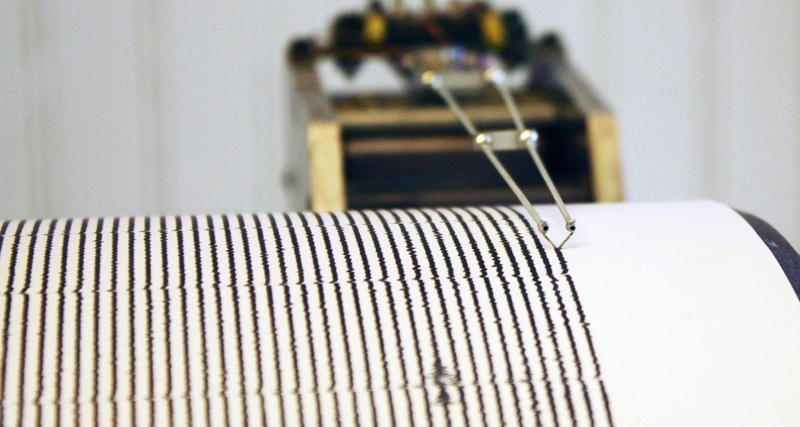Haptic technology & learning: Prepare to be wowed!

Prepare to be wowed!
In 2015, we wrote an insight article on how, in the future, haptic technology would revolutionise the way we interact with technology by introducing senses such as feel, force, pressure and spatial awareness. Haptics would, we predicted, make digital experience almost as good as the real thing.
Two years down the line, how much closer to this are we? The answer is that we’re so close, we can almost touch it! But there’s more – hold that thought for a moment…
What is it?
Haptics is derived from the Greek word Haptikos. It relates to our sensory ‘feedback’ – the perception we get when we touch or feel something. In the early 1900s, psychologists carried out a lot of research into the active touch of real objects by people and what they perceived from this.
In today’s digital world, the science has moved on to how humans interact with computers and devices via touch. Haptic technology is therefore nothing new. In fact, it’s in everyday use, most notably in devices and games.
It’s also used in some training, but not much – yet.
Where we are now
The exciting news, however, is that simulations have been developed and are being road-tested and fine-tuned in areas such as healthcare, mechanics, and military training. The medical profession, in particular, is leading the way with developing training where haptic technology allows medical students to experience what it’s like to carry out invasive surgical procedures – without any human beings being involved (or hurt!) in the process.
The British Society for Colposcopy and Cervical Pathology has shown us how this ground-breaking learning has the potential to provide the medical profession with the most realistic training imaginable. The model is still under development, but it really is worth spending 25 minutes to watch this film on their website that shows just how amazing haptics technology is and how, quite soon, it will be making a huge impact on learning.
The model of the medical procedure shown will involve over 100 different steps once it’s finished. The learner feels as though they’re actually carrying out the examination and is ‘told’ when their pressure is too much or if they’re not probing in the correct area. Building the model brings together medical experts and design teams who translate the ‘reality’ into the training model with a range of simulation tools and 3D. The learner uses a control to replicate what they’d be doing in the operating theatre.
Other professions where learning on the job could prove hazardous are also looking at haptics in their training. The fire service in Australia is a perfect example. Firefighters need experience of how to tackle a raging bush fire - but how can they train realistically for such a dangerous scenario?
One answer could be Flaim Trainer, a haptically-enabled hot fire training system that was recently demonstrated by the Institute for Intelligent Systems Research and Innovation from the University of Deakin in Australia. It works by connecting HTC’s Vive Tracker to a fire hose. The kit is completed with a fire jacket that heats up (but not too much!) the closer you get to the VR ‘flames’ that you’re tackling. The hose creates a realistic sense of water pressure, as the user works to put out the fire. And the longer you take, the denser the smoke.
So there’s no question that significant strides have been made in the past couple of years. The results of this ongoing developmental work by innovative companies will become available to learning teams in the very near future.
But there’s more, much more, to come!
Where are we likely to be in, say, five years’ time? Here are a couple of clues as to the way innovation will be enabling new types of training, using haptics to sense things that aren’t detectable with our own five senses. Yes, you heard right!
Neuroscientist David Eagleman argues that by using only our five senses, we are placing our own biological limits on what we can do. As humans, he says we can perceive less than a ten-trillionth of all light waves. Eagleman has used his research into our brain processes to create new interfaces, including a smartphone-controlled sensory vest that translates sound into patterns of vibration for people without hearing. Essentially, what he is saying is that haptic technology can be used to create new senses for us.
A company called Wicab, meanwhile, uses electrodes to stimulate the tongue to allow people to “see” via a feeling on their tongue. In this instance, sense substitution is allowing people with sight impairments to navigate the world around them in a way they couldn’t before.
The challenge is to adapt these ‘new senses’ to learning. It will happen but it will take time, probably five years or so.
Our advice to learning leaders? Stay informed and up to date with haptics. Seek out the latest news and be ready to take advantage of what it offers. Your organisation’s learning will be transformed. We know the trend of using virtual and augmented reality in learning will grow and as VR becomes much more widely used in workplace training, haptic technology will be playing an increasingly important role.
And if the potential for sensory substitution is reached, haptics will be taking skills learning into a whole new world.
Want to talk more about this? Get in touch with Sponge.